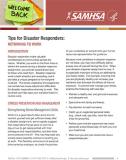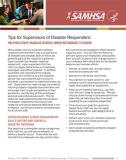
This brochure explains the signs and symptoms of retraumatization. Gives guidance on how to manage the symptoms. It provides resources for building resilience and an adequate support system for dealing with triggering events.
Units per Product
Download
Coping with Retraumatization
File Type: PDF
File Size: 2.2 MB







